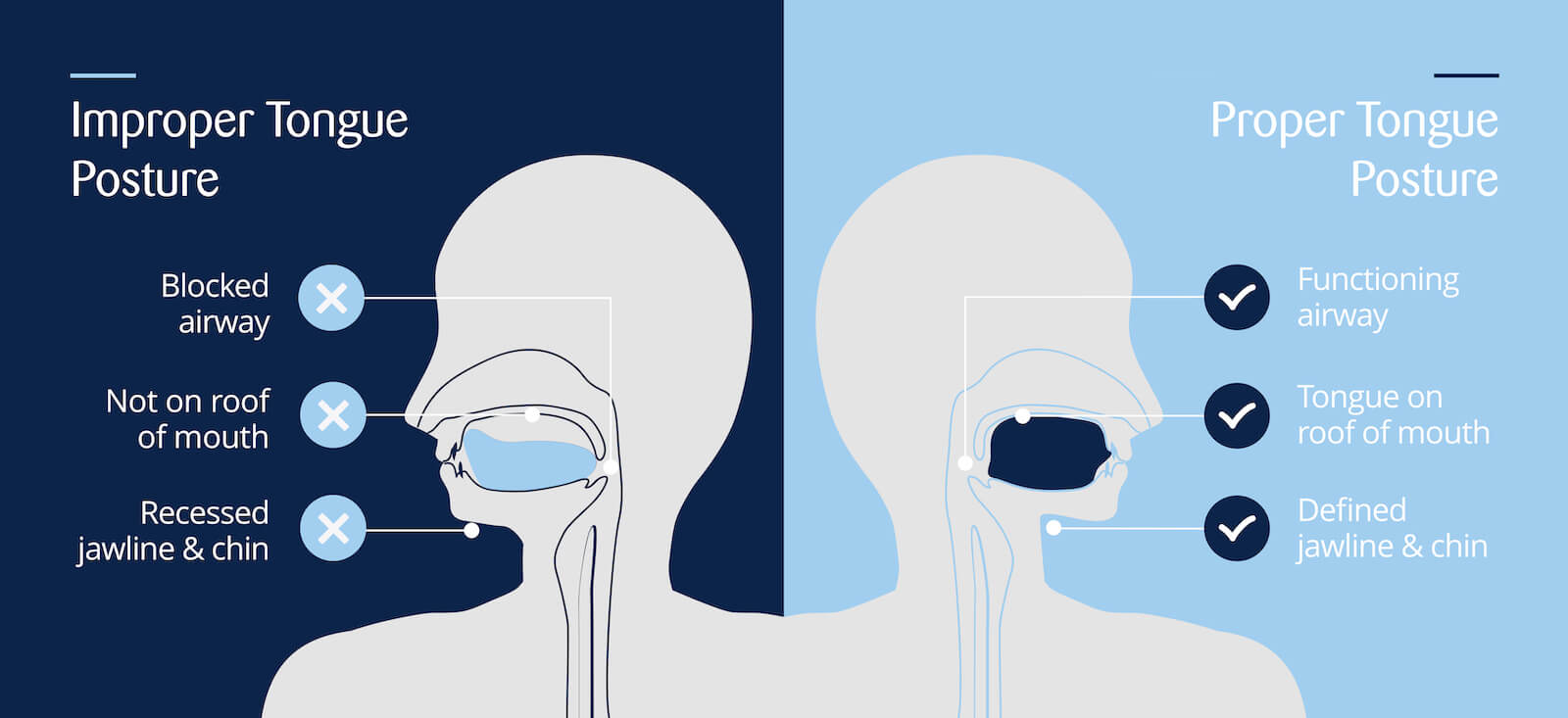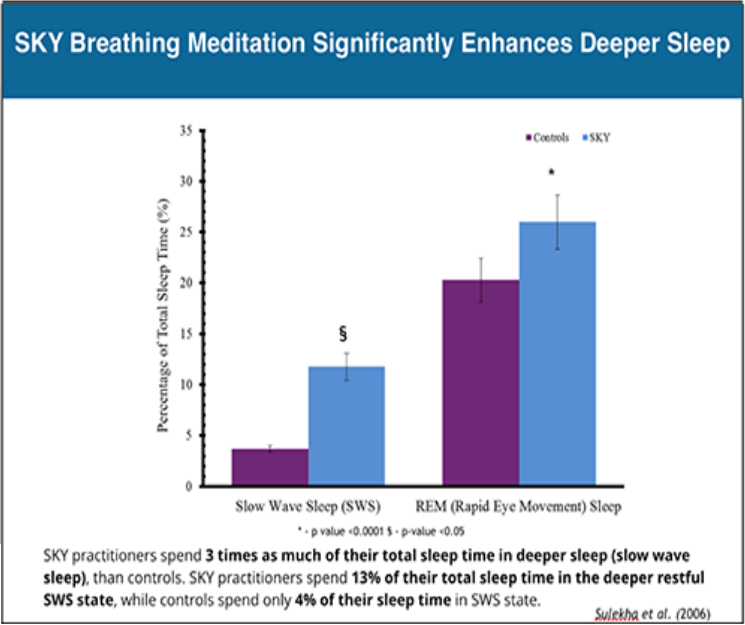Around 1 in 5 Americans suffer from some form of mental illness, according to the National Alliance on Mental Illness.
Anxiety is among the most rampant, with 40 million Americans reportedly suffering from anxiety regularly.
Relaxation and mindfulness techniques like meditation and breathwork are proven to help relieve anxiety and improve mental health in a pinch.
SKY breath meditation combines the power of both meditation and breathwork as a powerful, unique method to help balance and regulate our nervous system.
What is SKY Breath Meditation?
Breathwork has been a fixture in many cultures for centuries. Many mindfulness and meditation practices center around specialized breathing techniques and patterns.
This is no accident, as breathwork is proven to balance the autonomic nervous system by taking us out of a state of “fight or flight” and pushing the body into a state of relaxation.

SKY breathing is a form of yogic breathing that stands for “Sudarshan Kriya Yoga.”
This specific form of breathwork meditation was discovered by Sri Sri Ravi Shankar, founder of the Art of Living.
SKY breath meditation involves several cyclical breathing patterns that range from slow, deep breaths to rapid inhalations and exhalations.
Growing evidence suggests that SKY breath meditation can serve as a low-risk, affordable aid for improving mental health.
In fact, it’s even been proven to be an effective treatment for stress, anxiety, depression, PTSD, and more.
SKY breathing helps to decrease cortisol, a stress hormone known to cause irritability, anxiety, and depression.
Research completed at Yale evaluated three different well-being techniques, including SKY breath meditation, Mindfulness-Based Stress Reduction, and a Foundations of Emotional Intelligence program.
Participants were randomly assigned to a program or control group. Results revealed that the group who practiced SKY breath meditation experienced the largest benefit to mental health, stress management, emotional regulation, and social connection.
Separate research examined the effects of SKY breath meditation on veterans from Iraq and Afghanistan struggling with trauma.
Findings uncovered that the technique helped to regulate anxiety levels within just one week. What’s more, they continued to reap the mental health benefits a full year later.
Furthermore, SKY breathing is proven to enhance deeper sleep.
SKY practitioners spend 3 times as much of their total sleep time in deep sleep when compared to those who don’t regularly practice SKY breath meditation, according to research.
We know that SKY breath meditation is effective. But why? Our physiological states are directly linked to our breathing patterns, for starters.
Breathing and Emotions: They’re Linked!
When we’re happy and feeling soothed, our breathing patterns follow suit by remaining calm and slow.
However, when we’re feeling anxious, our breathing becomes shallow and rapid, activating our fight or flight response.
Moreover, we can shift the state of our nervous system from anxious to calm by controlling our breathing patterns.
When it comes to SKY breathing, it reduces our anxiety and stress while improving our mood by helping us tap into our parasympathetic, or rest and digest, response.
When we breathe slowly through the nose, we produce a molecule called nitric oxide: a vasodilator with seemingly endless benefits.
Nature’s Miracle Molecule
When we breathe in and out of the nose rather than the mouth, our paranasal sinuses help to effectively oxygenate the body.
The nose warms, filters, and humidifies the air while nitric oxide is produced and delivered through our sinuses and into the lungs.
Nitric oxide levels are often touted as an indicator of good health by many physicians. As we age, nitric oxide production typically declines.
By breathing through the nose rather than the mouth, we can keep nitric oxide levels high. Additional benefits of nitric oxide include:
- Immune defense against airborne pathogens
- Blood pressure regulation
- Efficient gas exchange
- Boosted blood flow and circulation
- Improved lung capacity
- Increased airflow to arteries, veins, etc.
Therefore, focusing on your breath has huge perks.
@somnifix Nitric oxide 101 😤 #nasalbreathing #nitricoxide #antiviral #parasympatheticactivation #airwayhealth ♬ S.I.M.P (Squirrels In My Pants) [From 'Phineas And Ferb'] - Geek Music
When it comes to SKY breath meditation techniques, practicing this method is critical for boosting nitric oxide production and calming the brain and body.
Here’s how to practice it.
How to Practice SKY Breath Meditation
SKY breath meditation is known to benefit people of all ages, no matter the root of any anxiety, depression, or stress.
That said, this technique isn’t as simple as other breathing exercises like box breathing or abdominal breathing.
SKY is a cyclical, controlled breathing technique that includes four main different types of yogic breathing.
- Ujjayi, also called Victorious Breath
- Bhastrika, also called Bellows Breath
- Om chant
- Sudarshan Kriya, also called Purifying Breath
It’s recommended that SKY breath meditation is practiced under the guidance of a yoga teacher or instructor via the SKY Campus Happiness site.
It’s also available to take as a class at certain universities across the U.S., like Stanford University.

The first type of breathing, Ujjayi, includes breathing in a very slow, relaxed manner with an extra focus on keeping your inhalations and exhalations equal.
Bhastrika, or Bellows Breath, involves inhaling and exhaling forcefully at a rate of around 30 breaths per minute. Exhalations should be twice as long as inhalations.
The next method includes chanting “Om” three times. This sound is thought to be the basis of all life, connecting us to our breath and life force.
Kriya, an advanced form of breathing known as Purifying Breath, involves cyclical breathing at slow, medium, and fast speeds. Inhalations should be twice as long as exhalations.
The whole process takes around 45 minutes to complete.
Once you’ve integrated SKY breath meditation into your daily or weekly practice, focus on improving your breathing in general - especially during sleep!
Produce Nitric Oxide As You Sleep
While breathwork is a quick way to hack your nervous system, the way you habitually breathe matters, too.
If you breathe in and out of your mouth regularly, you’re placing unneeded stress on your body and mind.
Nasal breathing, however, ensures nitric oxide production while boosting oxygenation, activating our rest and digest response.
As a result, nasal breathing helps us feel less anxious, stressed, and groggy.
Shifting from mouth breathing to nasal breathing requires you to pay extra attention to your breathing patterns and develop a proper tongue posture.

That said, if you nasal breathe during sleep, you’ll experience better quality rest and snoring prevention.
But how do you make sure you’re nasal breathing if you’re asleep? Mouth tape.
Mouth tape provides an additional intervention that stops mouth breathing in its tracks while promoting a proper lip seal and tongue posture during sleep.
Better yet, you can say goodnight to snoring for good. Mouth breathing causes airway tissues to fall backward and vibrate together, producing snoring, while nasal breathing prevents it.
However, chemicals in the adhesives of most tapes aren’t skin safe. That means rashes and irritation.
SomniFix was created as a skin-safe solution to prevent snoring, promote nasal breathing, and boost nitric oxide production for stress relief and improved sleep.
Our strips are created from gentle, hypoallergenic materials free from gluten and latex.
What’s more, SomniFix includes a patented central breathing vent to ensure that you can mouth breathe overnight if you happen to become congested.
Tape your way to mindfulness and optimal breathing with SomniFix!







